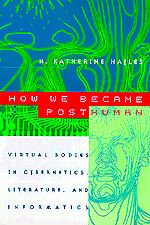Implantable Brain Chips
Maguire Jr, G. Q. and E. M. McGee (1999). "Implantable Brain Chips? Time for Debate." Hastings Center Report 29(1): 7-14.
Maguire and McGee review a number of prospects for brain/sensory modification, drawing on the current 'cyborg' Steve Mann.
They make the case for a serious consideration of sci-fi prospects in bioethics, a worthy view. Their moral debate recounts what might be characterised as standard objections to technological enhancement: the oppositional natural/technological natures of humanity,concerns about bodily integrity and the sanctity of life, distinctions between therapy and enhancement, safety, risks, social consequences, costs, equity.
It would probably have been useful to pursue some of the narratives of the sci-fi that they mention at the beginning. This could assist in understanding how we frame possible futures and how they relate to our (jeopardised) sense of moral agency, which is central to many stories about technology 'out of control'.




